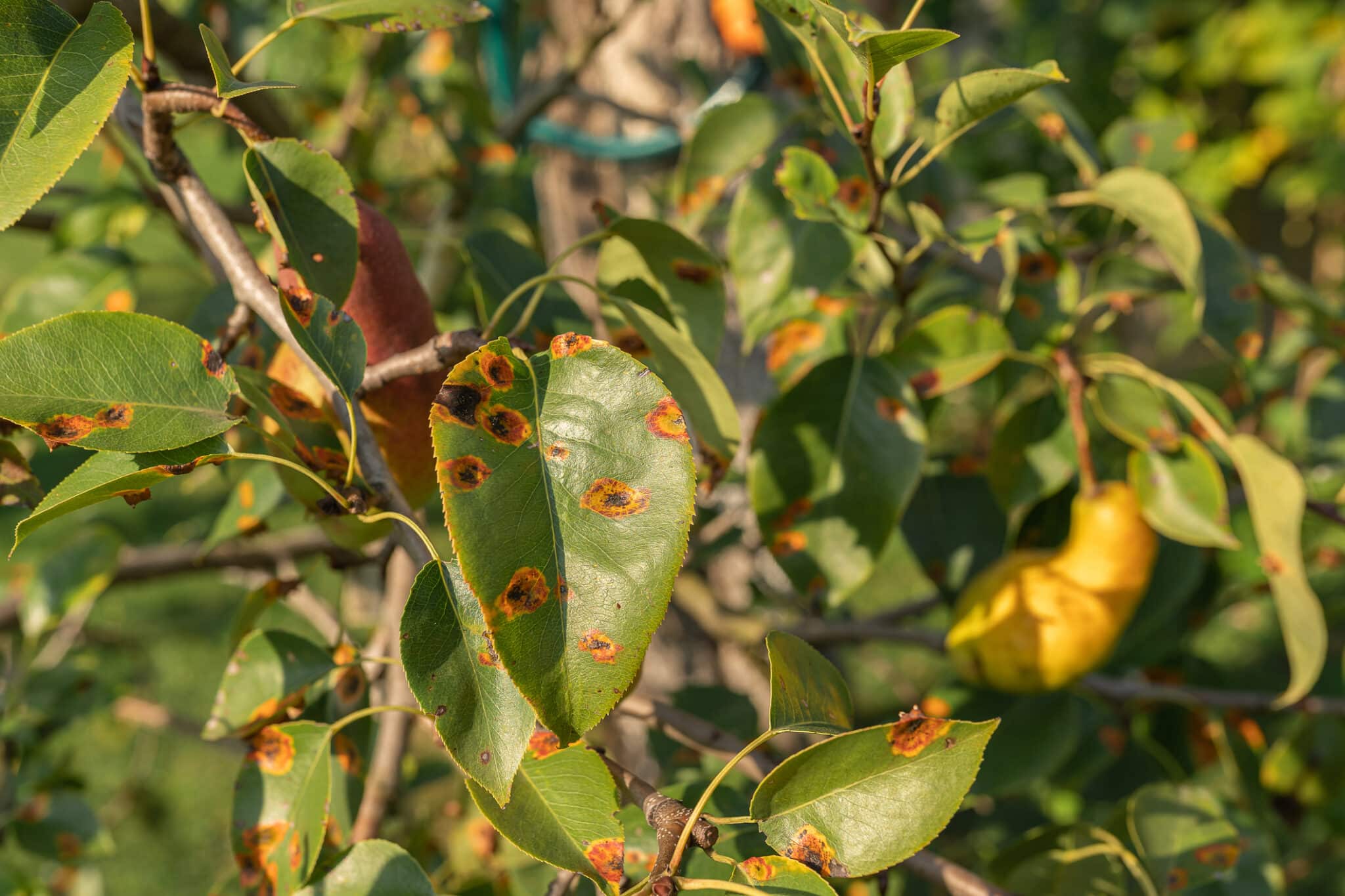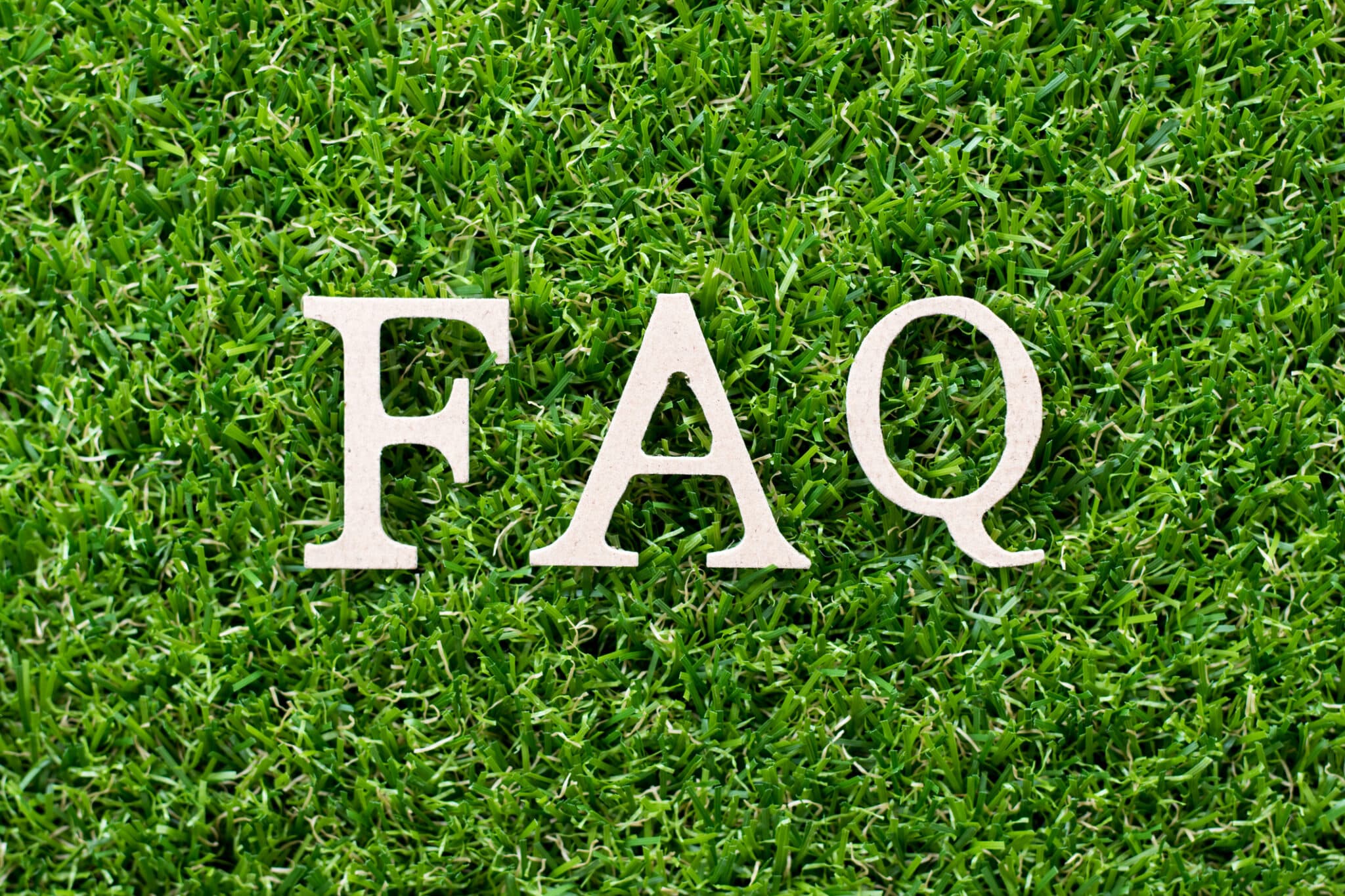Have you noticed unusual spots on your tree’s leaves or branches looking a little off? Tree diseases can sneak up when you least expect them, leaving once-healthy trees struggling to survive.
Whether it’s a small infection or something more serious, knowing how to spot the warning signs can make all the difference. In places like Honolulu, HI, the warm, humid climate can create the perfect conditions for some diseases to spread fast.
Don’t worry—by understanding common tree problems and how to treat them, you can keep your trees healthy and thriving all year long.
Table of Contents
ToggleUnderstanding Tree Diseases
What Are Tree Diseases?
Tree diseases are infections caused by fungi, bacteria, or viruses that interfere with a tree’s ability to grow and stay healthy. These diseases can spread in different ways—through spores carried by the wind, by insects, or from infected soil.
When trees become diseased, they struggle to absorb water and nutrients properly, which weakens their structure and overall health.
Infected trees may show signs like wilting leaves, brown or black spots, peeling bark, or dead branches. If left untreated, these diseases can spread quickly to nearby trees, making early identification and care essential.
How Do Tree Diseases Affect Trees?
Tree diseases can have a serious impact on the health and lifespan of a tree by interrupting the flow of water and nutrients. Without proper nourishment, trees begin to weaken, showing visible signs like yellowing leaves, stunted growth, and branches dying off.
A diseased tree becomes more vulnerable to pests, environmental stress, and even storms, which can lead to further damage or cause it to fall.
In Honolulu’s warm and humid climate, certain tree diseases can develop and spread faster, especially during rainy periods. When left untreated, severe infections can cause trees to deteriorate beyond recovery, sometimes requiring removal to prevent further spread.

Common Tree Diseases in Hawaii
Leaf Spot Disease
Leaf spot disease is a widespread issue in Hawaii, affecting many tree species by causing small brown, black, or reddish spots to appear on leaves. As the disease progresses, the spots can grow larger, causing leaves to yellow and drop prematurely, which weakens the tree.
This infection is often caused by fungi or bacteria that thrive in humid climates, making it a persistent issue in places like Honolulu.
The loss of leaves over time can significantly reduce the tree’s ability to perform photosynthesis, limiting its growth and vitality. Managing leaf spot disease requires prompt action, including pruning infected leaves and applying fungicides to stop further spread.
Root Rot
Root rot is a serious condition that occurs when tree roots are exposed to excess moisture for too long, creating ideal conditions for fungi to take over. Infected roots begin to decay, becoming soft, dark, and mushy, preventing the tree from absorbing the water and nutrients it needs to stay healthy.
Trees suffering from root rot may show signs such as wilting leaves, yellow discoloration, or sudden dieback, even though the soil around them may appear damp.
This disease is especially common in poorly drained areas or during the rainy season in Hawaii, making it a significant concern for homeowners. Preventing root rot involves planting trees in well-draining soil, improving drainage systems, and avoiding excessive watering to keep roots healthy.
Powdery Mildew
Powdery mildew is an easily recognizable fungal disease that forms a white or gray powder-like coating on the leaves, stems, and flowers of trees. It tends to develop rapidly in Hawaii’s warm, humid climate, particularly in shaded areas where airflow is restricted.
Affected trees often experience distorted growth, reduced foliage, or stunted development as the fungus interferes with photosynthesis. While powdery mildew may not directly kill trees, it weakens them over time, making them more vulnerable to other diseases and environmental stressors.
Effective management includes pruning for better airflow, removing infected parts, and applying fungicides to halt the spread.
Canker Diseases
Canker diseases are destructive infections that cause sunken, discolored areas on the bark, often accompanied by oozing sap or cracking. These infections typically enter the tree through wounds or damaged bark and spread quickly during wet weather.
Cankers weaken the tree’s branches and trunk, increasing the risk of breakage during storms, which can be dangerous to people and property. Additionally, severe canker infections block the movement of water and nutrients within the tree, causing dieback in certain areas.
To prevent and control canker diseases, it’s important to prune damaged branches and seal pruning wounds to minimize the risk of infection, especially during Hawaii’s rainy season.
Identifying Tree Diseases
Signs of Tree Diseases
Recognizing the signs of tree diseases early can make a big difference in preventing serious damage to your landscape. Some of the most common symptoms of tree diseases include discolored or wilting leaves, unusual spots or blotches that appear across the foliage, and peeling or cracking bark.
Infected trees may also develop dead branches, fungal growth on the trunk, or sticky sap that oozes from open wounds, all of which are clear indicators of underlying tree diseases. Some diseases can cause stunted growth, with new leaves growing smaller, weaker, or deformed compared to healthy ones, making it obvious the tree is under stress.
Observing Changes in Tree Growth
Changes in growth patterns are often one of the earliest clues that tree diseases may be affecting your plants. A previously healthy and thriving tree might suddenly start producing fewer leaves, smaller fruits, or weaker branches, which could indicate that it is struggling with tree diseases.
You may also notice that the tree’s growth has slowed down significantly, with new shoots appearing fragile, undersized, or discolored, making it more vulnerable to environmental stress. Infected trees suffering from tree diseases might drop leaves or flowers earlier than expected, disrupting their normal seasonal cycle.
Additional Tree Diseases
Anthracnose Disease
Anthracnose is a fungal disease that creates dark, sunken lesions on leaves, stems, flowers, or fruits, often affecting trees like sycamores, oaks, and dogwoods.
This disease becomes more prevalent in cool, wet weather, which makes it a common issue during the rainy seasons.Infected trees frequently drop their leaves prematurely, with the remaining foliage showing curled edges or irregular dark spots, indicating the spread of the fungus.
Rust Disease
Rust disease is easy to spot because it creates bright orange or yellow pustules on leaves, stems, or fruits, giving infected trees a distinct appearance.
This fungal infection often targets trees such as pine, cedar, and certain fruit-bearing species, causing noticeable changes in the foliage. Rust disease weakens trees by interfering with photosynthesis, leading to premature leaf drop and slower growth over time.
The disease spreads rapidly in humid conditions, which makes it particularly problematic in Hawaii’s tropical climate. Effective treatment requires removing infected parts of the tree, applying fungicides to control the fungus, and improving airflow around the tree to keep moisture levels down.
Wilt Diseases
Wilt diseases, including Verticillium wilt, affect a tree’s ability to transport water throughout its structure, leading to rapid wilting and dieback. Common symptoms include yellowing leaves, curled foliage, and branch dieback, often beginning on one side of the tree before spreading gradually.
These diseases are caused by soil-borne fungi that invade the roots, making trees especially vulnerable if they have been stressed by drought, injury, or poor soil conditions.
Unfortunately, there is no direct cure for wilt diseases, so managing them requires improving soil health, pruning affected branches, and providing deep watering to help the tree regain strength. Monitoring for early symptoms and ensuring trees are properly nourished can slow the progression of these diseases.
Sooty Mold
Sooty mold is a fungal growth that forms a black, powdery layer on the surfaces of leaves, branches, and fruits. Although the fungus does not infect the tree directly, it grows on the honeydew excreted by pests like aphids, mealybugs, and scale insects.
The black coating blocks sunlight from reaching the leaves, which reduces photosynthesis and causes foliage to wither and fall prematurely. Managing sooty mold involves first controlling the insect infestation that produces honeydew, which can often require insecticides or natural pest management methods.
Impact of Climate on Tree Diseases in Hawaii
Humidity and Tree Health
The warm, tropical climate of Honolulu, HI creates the perfect environment for certain tree diseases to flourish, especially due to the high levels of humidity. Moist conditions allow fungi and bacteria to spread more easily, leading to common issues like leaf spot disease and powdery mildew.
Trees that remain damp for long periods—whether from rain, irrigation, or morning dew—become more vulnerable to infections.
Humidity also slows down the drying of leaves and bark, making it harder for trees to resist disease. Ensuring proper airflow through pruning and spacing trees appropriately can reduce moisture buildup and improve tree health.
Seasonal Considerations
Hawaii’s climate features distinct wet and dry seasons, both of which play a role in tree health. During the wet season, heavy rainfall can lead to waterlogged soil, increasing the risk of root rot in trees planted in poorly draining areas.
Fungal diseases also spread more easily during these months as the moisture encourages spores to grow and infect nearby plants. On the other hand, the dry season presents challenges like drought stress, which weakens trees and makes them more susceptible to infections.
To maintain healthy trees throughout the year, it’s important to adjust watering routines based on seasonal changes and provide extra care during extreme conditions.
Treatment Options for Tree Diseases
Consulting with Professionals
When trees show signs of disease, consulting with a professional arborist is often the best way to ensure proper diagnosis and treatment. Arborists have the expertise to identify specific diseases, assess the severity, and recommend the right course of action.
Attempting to treat tree diseases without professional help can sometimes make things worse, especially if the wrong chemicals or pruning methods are used.
In areas like Honolulu, where the climate can make certain diseases more aggressive, expert advice is critical to protect both the affected tree and others in your landscape. Professionals can also provide preventative care plans to keep trees healthy long-term.
Treatment Methods
Treating tree diseases requires a careful approach to ensure the health of the affected tree and prevent the spread of infections to others. Here are some of the most effective treatment methods:
- Fungicides: These are chemical treatments designed to control fungal infections like leaf spot disease and powdery mildew. Applying fungicides correctly and at the right time can help halt the spread of the disease and promote recovery.
- Pruning: Removing infected branches helps prevent the disease from spreading further within the tree or to other nearby plants. Proper pruning also improves airflow, reducing humidity around the tree and lowering the chance of future infections.
- Proper Watering & Fertilization: Keeping the tree properly hydrated and nourished strengthens its natural defenses, allowing it to recover from stress-related diseases. Trees that receive the right amount of water and nutrients are better equipped to resist infections over time.
- Improving Soil Drainage: Good drainage is critical for avoiding waterlogging, which can lead to root rot and other soil-borne diseases. Enhancing the soil’s drainage capabilities by adding organic matter or regrading the area can prevent future rot issues.
- Tree Removal: In extreme cases, removing a severely infected tree may be the only way to protect the health of nearby plants. If a disease is highly contagious or untreatable, tree removal stops the infection from spreading further.
Using the right combination of these treatments can restore your trees’ health and prevent further issues. If you’re unsure which method is right for your tree, contacting a professional arborist is always a smart move to ensure the best outcome.
Preventative Measures for Tree Health
Proper Tree Care Practices
Consistent tree care is the best way to prevent diseases from taking hold in the first place. Trees need the right amount of water, sunlight, and nutrients to stay healthy, making it essential to tailor care to each tree species.
Proper pruning techniques prevent overcrowded branches, which improves airflow and reduces the chances of fungal growth. Additionally, applying mulch around the base of trees helps retain moisture and protect roots from extreme weather.
Regular fertilization ensures that trees have the nutrients they need to build strong defenses against infections, especially during stressful seasons.
Monitoring Tree Health Regularly
Keeping a close eye on your trees makes it easier to spot early warning signs of disease before they become severe. Regular inspections—especially after heavy rains, droughts, or strong winds—help identify problems like wilting leaves, unusual spots, or dead branches.
Observing changes in growth patterns, such as smaller leaves or early leaf drop, is also crucial in catching diseases in time.
Homeowners in Honolulu should pay extra attention to trees during the wet season, when fungal infections are most common. By monitoring tree health regularly, you can respond quickly to issues and prevent the spread of diseases to other plants.
Protect Your Trees – Keep Your Yard Thriving in Honolulu
Don’t let tree diseases take over your beautiful landscape. At Mana Home Services, we provide expert care to keep your trees healthy and your yard looking its best.
Whether it’s identifying infections early or treating existing problems, our team knows how to handle Hawaii’s toughest tree challenges. Get ahead of tree diseases—contact Mana Home Services today and ensure your trees thrive in Honolulu’s tropical climate all year long!

FAQs
What should I do if I suspect my tree is diseased?
If you suspect your tree is diseased, the first step is to inspect it closely for symptoms such as wilting leaves, discolored spots, or peeling bark. If the signs are not clear or the problem seems severe, it’s best to consult with a professional arborist.
How can I prevent tree diseases in my yard?
The key to preventing tree diseases is to practice good tree care consistently. This includes proper watering, regular pruning, applying mulch, and fertilizing as needed. Keeping trees healthy and stress-free helps them develop natural resistance to infections.
Are there specific trees in Hawaii more prone to diseases?
Yes, some species are more prone to diseases, especially in Hawaii’s humid environment. For example, tropical trees like plumeria are vulnerable to rust diseases, and certain palms can be affected by lethal yellowing. It’s important to research which tree species thrive in your area and give them the right care to reduce disease risks.
Can tree diseases spread to other plants in my yard?
Yes, many fungal diseases can spread through spores in the air or water, infecting other nearby plants. If one tree in your yard becomes diseased, isolating it and treating it quickly is important to prevent the infection from spreading to healthy trees.
When is the best time to treat or prune trees in Hawaii?
The best time to prune or treat trees is typically during the dry season when there is less chance of fungal spores spreading through moisture. Pruning during dry periods also helps trees recover faster. However, if a tree is showing signs of disease, it’s important to act quickly, regardless of the season, to prevent further damage.


